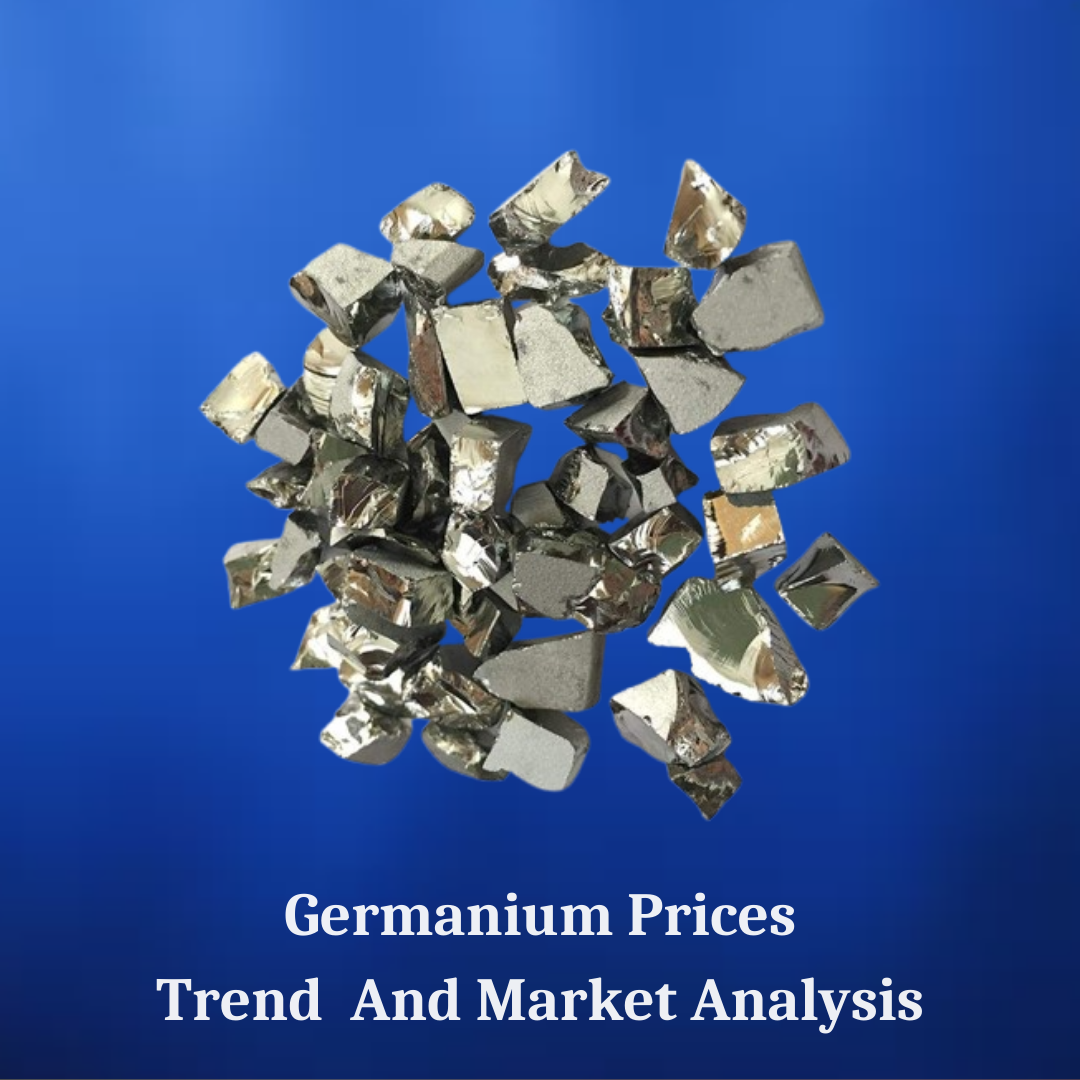
The Germanium price trend in 2025 is getting more attention than usual, especially because this lesser-known metal plays a big role in some very high-tech industries. Even though Germanium isn’t something most people talk about daily, it’s used in fiber optics, infrared systems, solar panels, and even semiconductors. In 2025, the price of Germanium showed both steady periods and sudden jumps, mostly due to changes in global demand, export regulations, and how countries manage their critical mineral supplies.
👉 👉 👉 Please Submit Your Query for Germanium Price Trend, forecast and market analysis: https://www.price-watch.ai/contact/
What the Germanium Market Looks and Feels Like in 2025
Right now, the Germanium market in 2025 feels both tense and promising. Tense because supply is tight, and any disruption—like a policy change or transport delay—affects prices fast. Promising because there’s growing long-term demand, especially from green energy technologies and military-grade optics. Industries are realizing just how critical Germanium is, especially in fiber optics and infrared imaging used in defense. Companies in Europe, Japan, and the U.S. are trying to secure long-term supplies, while some are even investing in recycling programs to recover Germanium from old electronics and production waste. So overall, the market has become more serious and strategic this year.
Market Size, Demand, and Regional Outlook
The global Germanium market isn’t huge in volume compared to metals like copper or aluminum, but it’s extremely valuable. Most of the demand comes from a few key industries—telecommunications, solar, infrared optics, and electronics. In terms of geography, China still leads both in mining and refining. But countries like Canada, the U.S., and Belgium are trying to increase their share, especially through recycling. The market is expected to grow steadily through the decade, with a compound annual growth rate (CAGR) of around 6% to 8%, depending on how quickly newer technologies like concentrated solar power and autonomous vehicle sensors expand.
What’s Causing Price Fluctuations in 2025
There are a few major reasons behind Germanium price changes this year. First, China’s move to limit exports has created uncertainty in global supply. This pushed prices up in Q1 and caused buyers to scramble for alternatives or build stockpiles. Second, demand is rising—not just from existing industries but also from future technologies like quantum computing and advanced semiconductors. Third, recycling is still limited. Even though there’s effort being made, recovered Germanium only meets a fraction of global demand. Lastly, since Germanium is a by-product of zinc refining, any drop in zinc production also affects how much Germanium is available on the market.
Challenges in the Germanium Supply Chain
The biggest issue in 2025 is that most of the world’s Germanium comes from just a few places—mainly China. That means geopolitical tensions or even routine policy changes can shake the market. Another problem is that mining new Germanium isn’t easy or cheap. It usually comes in small amounts as a by-product, so producers can’t just ramp up production overnight. Environmental concerns also play a role. Some countries are being more careful about how mining and refining are done, which affects how quickly new supply can be brought to market. And then there’s the tech angle—new products are asking for purer forms of Germanium, which not every supplier can deliver.
Who Are the Key Players in the Market
The Germanium market has a mix of state-linked companies and private producers. China’s Yunnan Lincang Xinyuan Germanium Industrial Co. and China Germanium Co. are big names in production. Outside of China, Teck Resources in Canada and Umicore in Belgium are significant players, especially in recycling. U.S.-based companies are more focused on R&D and using Germanium in specialized technologies like military optics and semiconductor testing. Governments are also starting to play a bigger role by including Germanium in their list of critical minerals, which may lead to more funding and exploration projects.
How the Market Is Split by Use
Germanium is used in several industries, but the biggest chunk goes to fiber optics and infrared optics. Fiber optics are essential for high-speed internet and telecommunications, which are growing in both advanced and developing countries. Infrared optics are used in military night vision, medical imaging, and some industrial equipment. The solar sector also uses Germanium, especially in space-grade solar cells that require very high efficiency. Finally, some is used in polymerization catalysts and electronic devices. Each of these segments reacts differently to price changes, which adds complexity to the market.
What Could Happen Later This Year
For the rest of 2025, the outlook depends a lot on how supply chains adjust to China’s export restrictions. If alternative sources or recycling methods improve, prices may level out. But if demand keeps rising and supply stays tight, prices could go up further, especially in regions that rely heavily on imports. Watch for announcements from tech companies and government agencies—if they begin stockpiling or shifting to alternatives, that could affect market direction. On the positive side, some mining and refining projects are underway outside of China, which could help ease global reliance over time.
Long-Term Forecast and What to Expect Next
Looking past 2025, Germanium is likely to remain in high demand. As more countries push for stronger tech independence and cleaner energy systems, materials like Germanium will be seen as strategic assets. The pressure will grow to build more recycling systems and open up new supply sources. At the same time, newer industries like AI-powered sensors, autonomous vehicles, and quantum computing are starting to require even purer and more specific forms of Germanium. So the long-term outlook is strong, but it comes with a warning—without serious investment in alternative supply chains, prices could continue to be volatile and affected by policy.